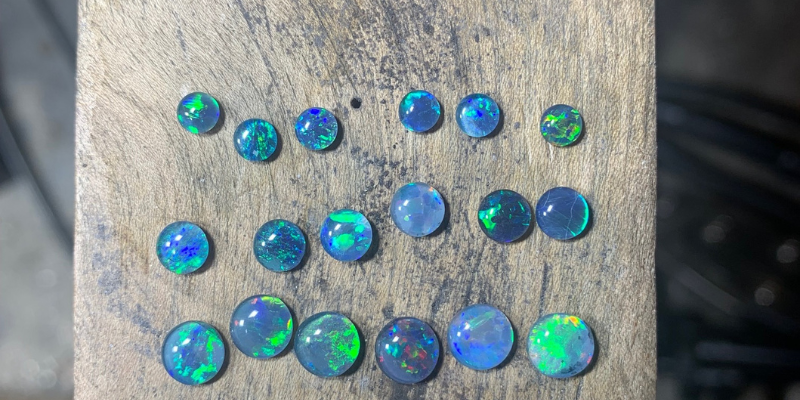6 misconceptions about opals
When you are looking for the most unique stone, you have to shop opals. Opals contain all the colors of every gemstone making each one a limited edition. Here are six fallacies about opals.
Opals are bad luck.
DeBeers had a strong marketing campaign to sell opals as unlucky so more people would buy diamonds. Opals are connected to many ancient cultures and considered to be magical stones. The Romans believed opal to be a symbol of hope, like the rainbow.
You have to soak your opal in water.
Opal is non-porous and nothing can get into the stone. Once opal is cut and polished there is no further treatment needed. Soaking it in water won’t hurt or help your stone.
The top image is an opal with lots of flash. The bottom image is a fire opal.
3. That’s a fire opal?
Opals with lots of color are opals with flash. Fire opals are solid red or red-orange and most come from Mexico, ours come from Oregon. Australian opals with lots of play of color have flash in them, not fire. The orange opal in the picture above is a fire opal.
4. Opals are fragile.
Opals are more fragile than most gemstones, but have the same hardness as glass. Wear your opal jewelry carefully, but most likely it will be fine. We like working with opal triplets. These opals have a protective cap over the opal. This is similar to your watch and allows you to wear your opal in all activities.
5. Fake opals are cheap.
They aren’t always “cheap”, but they do cost less than natural opals. You can spot a fake opal because the pattern is “too perfect” and often have straight columns of color. Natural opal color is random in alignment.
6. Opals need to be rubbed with oil.
Rubbing your opal with oil will do nothing more than make your jewelry slippery. Opals do not soak up any liquid.
Have any questions about opals, let us know by clicking here. We are here to help you find an opal to tell your story. When you find the one, you’ll know.


